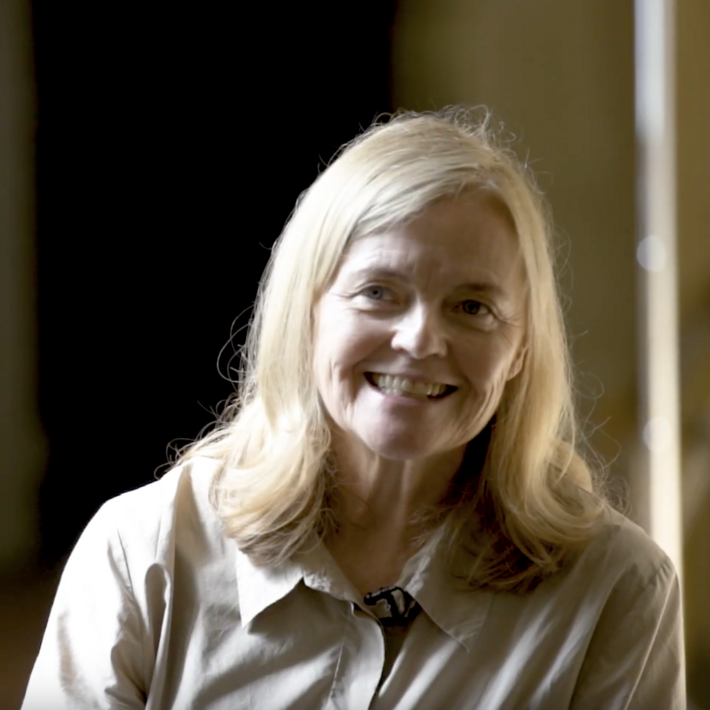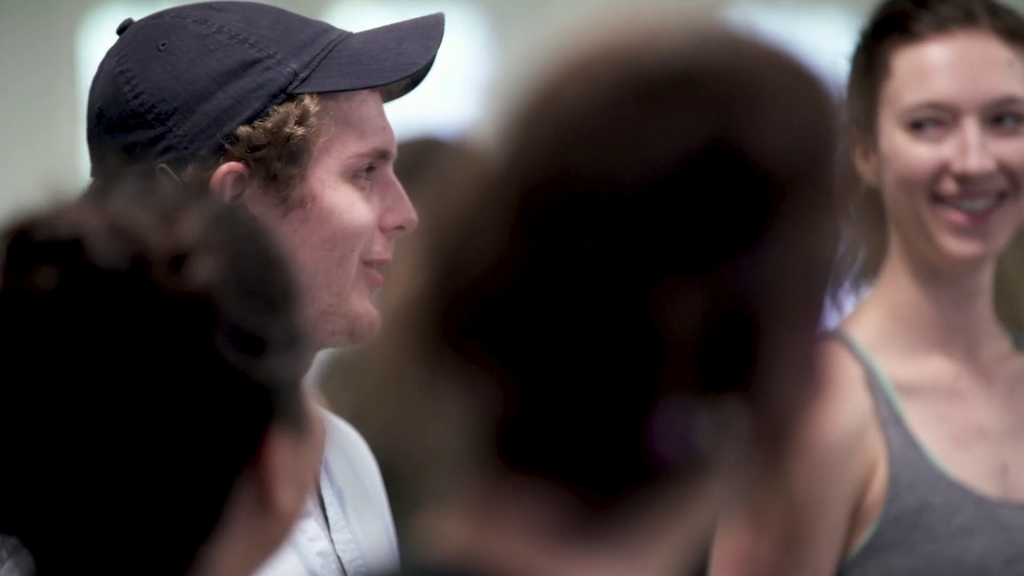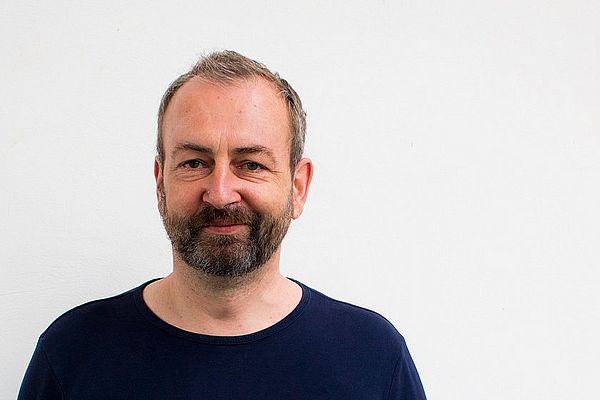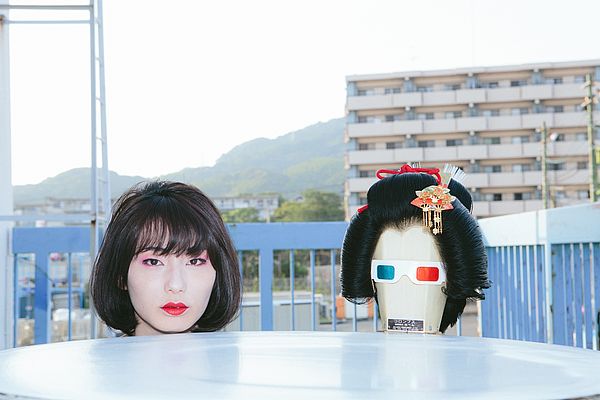Art in the Age of Movement
Jan Bartoszek on the timeless inspiration of the Bauhaus stage
Inspired by Bauhaus modernist art, Hedwig founder Jan Bartoszek’s newest work “Futura” is a vibrant and colorful exploration of how dance shapes and is shaped by society, art, architecture, and design in the 21st century. The multidisciplinary work, designed in a groundbreaking collaboration between Hedwig Dances, the Bauhaus Dessau, the IIT Institute of Design (established as the “New Bauhaus” 80 years ago) and Leviathan, premiered in early November 2018 in Chicago.

What does “totality” mean to you in terms of your stage work?
Totality means that each component – the space in which we move, the set, lighting, movements, music/sound, costume, projections – influences the direction of the created art, and is, in turn affected by it. The components therein cease to be separate, but unite in a totality, a new organic whole. Of course, it’s one thing to say, and quite another to achieve. The test is to take time to explore, challenge, clarify the work for oneself and with one’s collaborators. And, to be able to work simultaneously with both the big idea and the detail.
How do we design body language?
As a choreographer, I design body language by beginning with an idea or a set of interwoven concepts, however abstract, using the dual languages of speech and movement. The next step is sharing these ideas with my dancers. The dancers and I reflect on and expand the original concepts through movement, developing fragments or phrases. The fragments grow, play off one another, and develop into complex fractals that reflect and magnify the original idea, often in ways unimagined at the beginning. I often work with costumes and objects with this process to create layered visual experiences. Ultimately as the body language becomes complete, it is communicated with an audience. The work---when successful---continues to resonate with the viewer. Each viewer brings their own individual experience to the process. These individual insights add meaning and personal interpretation to the work.
“The history of the theater is the transfiguration of the human form with human being as the actor of physical and spiritual events, alternating between naiveté and reflection, naturalness and artificiality.”
Oskar Schlemmer
Do you have a favorite Bauhaus quote?
Oh yes, they are two quotes by Oskar Schlemmer: “The history of the theater is the transfiguration of the human form with human being as the actor of physical and spiritual events, alternating between naiveté and reflection, naturalness and artificiality.” Through my work I hope to evoke a sense of the transcendent. The second quote reads: “Architecture, sculpture, painting – these are all static. [...] This might seem like a weakness, at least in the age of movement. [...] But the stage as a locus for temporal action offers movement of form and colour, first in its main configuration as mobile, coloured or colourless, linear, planar or sculptural single forms, as well as a changeable movable space and convertible architectonic structure.” This quote is a favorite because sculptural objects and costumes have long been a place of exploration for me. And, of course, movement is temporal. It disappears as it is performed. It only takes place in the moment in real time with real people who bring themselves to the movement.
Vimeo ASCENDance
Datenschutzhinweis
Wenn Sie unsere Vimeo-Videos abspielen, werden Informationen über Ihre Nutzung von Vimeo an den Betreiber in den USA übertragen und unter Umständen gespeichert.

What makes you believe in the future of the Bauhaus idea?
The Bauhaus idea(s) rooted in spatial concepts and geometries are so basic that they are open to infinite possibilities
Is there a today’s Oskar Schlemmer?
Hmmm... Rebecca Horn's work from the 1970’s seems like a progression of Schlemmer’s work. She performed live, but also made some compelling films wearing her costumes. Horn’s costumes are geometric, intricately crafted – simple, yet beautifully expressive extensions of the body. I think some costume works by Nick Cave reflect Schlemmer’s influence. Many of Cave’s costumes employ color and reshape the body in ways that are reminiscent of Schlemmer. Though very different from Schlemmer, both artists utilize the body as the starting point for transformation.
Bodies on the frontline: Can performance be a mediator between opposing movements?
In this latest work, I explore space, particularly the idea of confinement and freedom, as well as parallels between the Weimar era and our own time. The dance examines opposing movements in which the force of one movement becomes the energetic source for another reactive/opposing force. Is performance a mediator? Yes, insofar as performance presents challenging ideas that can be discussed in an open forum. Yes, too, in that within the process of multi-disciplinary development, artists wrestle with opposing movements to create complex metaphors. These non-verbal metaphors are relevant to our time when so many freedoms are being challenged.
Thank you, Jan!
Here a trailer on „Futura“:
Video 1
Datenschutzhinweis
Wenn Sie unsere Vimeo-Videos abspielen, werden Informationen über Ihre Nutzung von Vimeo an den Betreiber in den USA übertragen und unter Umständen gespeichert.

And here a making of „Futura Fractals: Exploring Bauhaus Design + Dance“:
Video 2
Datenschutzhinweis
Wenn Sie unsere YouTube-Videos abspielen, werden Informationen über Ihre Nutzung von YouTube an den Betreiber in den USA übertragen und unter Umständen gespeichert.

[NF 2018]

